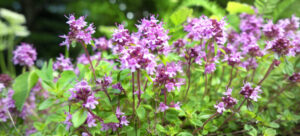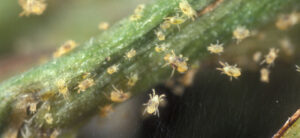
One morning you step into your grow room to check your plants, and you notice something alarming - powdery mildew.
Seemingly overnight, little white splotches have appeared on the leaves of one of your plants.
You have found a case of powdery mildew, which is one of the most common fungal infections growers will experience.
If you are combating powdery mildew currently, don’t worry. We will explain how to eradicate it efficiently.
But first, let’s discuss it in more detail, and explain how you can take steps to prevent it from infecting your plants in the first place.
What is Powdery Mildew?
Powdery mildew on plants, referred to as PM for short, is a fast-acting, harmful fungus. It is airborne and can overtake an indoor garden incredibly quickly.
PM is a common intruder in the grow room. It can be easy to eradicate if detected early but spreads so rapidly that it needs to be addressed immediately. This is why it is important to check the foliage of your plants on a daily basis.
If left untreated, the PM will overtake your entire garden. This can lead to a halt in growth, bud rot, and eventually, the death of plants.
What Does Powdery Mildew Look Like?
Powdery mildew fungi are pretty easy to differentiate from other fungi and plant diseases. Some symptoms of powdery mildew include:
- White patches of powder on leaves
- Mottling or a mosaic pattern on leaves
- Pale colored leaves
- Older, lower growth is affected first, and then upper, newer growth
- Wilting and drooping plants
How Does Powdery Mildew Spread?
Powdery mildew spores are commonly spread by the wind into gardens, greenhouses, or grow rooms, but if you’ve dealt with powdery mildew in the past, new outbreaks may also come from dormant spores in old vegetative leaves and stems or weeds nearby.
Unlike many other fungal diseases, powdery mildew thrives in warmer, dryer climates, though it does need a fairly high relative humidity to spread. In cooler, rainy regions, it does not spread as quickly, and it is also restricted by temperatures higher than 90°F. It tends to affect plants in shady areas more than those in direct sun.

How Do You Prevent Powdery Mildew?
An ounce of prevention is worth a pound of cure. Preventing PM in your indoor garden is as simple as removing moisture, circulating air, and setting up a proper ventilation system. This is super important to keep healthy plants healthy, and susceptible plants protected from the start.
An ounce of prevention is worth a pound of cure, and preventing PM in your indoor garden is as simple as removing moisture, circulating air, and setting up a proper ventilation system.
Humidity
Excess humidity creates a breeding ground for powdery mildew, along with many other fungi.
While plants are vegging, you should keep humidity between 40-60% to encourage fast, healthy growth.
While this is essential to cultivating strong plants, you need to be careful about excess moisture leading to PM.
If you are having trouble controlling your humidity, you may consider a dehumidifier.
Lack of Airflow
Another common culprit of powdery mildew is a lack of airflow. Make sure you are circulating air effectively in your grow room or grow tent.
Using oscillating fans and clip on fans will keep air moving, which not only strengthens stems but also aids in pest and disease control. Stagnant air creates an environment conducive to bug and fungus problems.
To learn more about fans and blowers, check out our full guide to using inline fans and blowers for grow room ventilation!
Note - if you do have a white powdery mildew outbreak, it may be best to turn your fans off until it is under control. Your fans will circulate the powdery mildew spores around the room, spreading the disease quicker!
Grow Room Air Circulation
Poor ventilation will keep fresh air from entering your grow room, and increase the likelihood of powdery mildew infecting your garden.
If you are already battling PM, poor ventilation will allow it to spread much quicker than normal.
You need to be exchanging the air in your grow room or grow tent at least every 3-5 minutes. A ventilation system consists of an intake fan and filter to bring in the fresh air, and an exhaust fan and filter to remove hot, smelly air.
A HEPA intake filter will greatly reduce the chances of contaminants entering your system, and a carbon exhaust filter will help remove odors from the grow room. Both are essential components of a ventilation system.If you want to learn more about setting up a proper ventilation system, check out our full guide on grow room atmosphere and ventilation.
Leaf-to-Leaf Contact
Leaf-to-leaf contact can also contribute to powdery mildew. A very overgrown plant canopy will create a micro-climate with higher humidity than ideal.
This can be mitigated by housing fewer plants in the growing area, and attention to detail while pruning.
Defoliation is a great way to increase the airflow within your plants, and can actually increase growth. By pruning large fan leaves, other areas of your plant can receive light. Depending on the type of plant, this can be a very important step.
Be careful not to remove too many fan leaves, as this can shock the plant and stunt growth.For more information on controlling your environment, click here.
Powdery Mildew Treatment
If you have taken all the preventative measures and steps for properly controlling powdery mildew on plants and still find yourself dealing with it, don’t worry! Our staff has the knowledge of how to get rid of powdery mildew.
If you catch it early, eradication can be pretty straightforward. Before you go crazy with the fungicides, assess how serious the outbreak is.
If there are just a few infected leaves that turn yellow, try removing them and the surrounding leaves. Watch the plant(s) closely, and at the first sign of continued infection, apply a fungicide.
The PM will never go away on its own, so if you do not take steps to treat it, it will only worsen.
Fungicides for Powdery Mildew
At Hydrobuilder, we carry a number of products you can use to fight powdery mildew, such as:
- Marrone Bio Innovations Regalia CG Biofungicide
- BioWorks Cease Biological Fungicide
- BioSafe ZeroTol 2.0 Algaecide, Bactericide & Fungicide
- Athena Mildew Control
- Monterey Lawn & Garden Neem Oil Ready-to-Use
If you want to see some recommendations for other problems you might encounter, our article on the best fungicides will be a great read.
Home Remedies for Powdery Mildew
These products are all safe for you and your plants, and will generally require the use of a garden sprayer or fogger. There are also a few home remedies you can try, such as:
- Milk Spray ( 10-12oz per gallon of water, 1:9 Ratio)
- Hydrogen Peroxide 35% (1 tsp per gallon of water)
- Baking Soda (“Sodium Bicarbonate” 2 Tablespoons per gallon)
- Apple Cider Vinegar (2-3 Tablespoons per gallon of water)
Plants Susceptible To Powder Mildew
Powdery mildew is a common disease in many kinds of plants. There are many different species of powdery mildew fungi (e.g., Erysiphe spp., Sphaerotheca spp.), and each species only attacks specific plants.
There aren’t any plants that are completely resistant to some form of powdery mildew, including vegetables, roses bushes, various trees, and shrubs.
Some plants that are more susceptible to powdery mildew than others, such as artichokes, beans, beets, carrots, cucumber, eggplant, lettuce, melons, parsnips, peas, peppers, pumpkins, radicchio, radishes, squash, tomatillo, tomatoes, and turnips.
There have been stories of success with these treatments, but we recommend going with something proven to work. With how quickly PM can overtake an indoor garden, you don’t want to waste time testing things.
As mentioned earlier, the best way to fight powdery mildew is to prevent it from infecting your plants in the first place. Put an emphasis on controlling your environment, and you will be far less likely to deal with any pests and diseases.
Even resistant varieties of plants can be susceptible to powdery mildew on plants, but with the tips and tricks we shared in this blog, you will be a PM professional in no time.To learn more about common indoor gardening pests, check out this article!










































